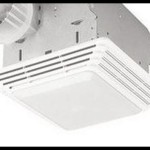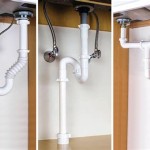How To Get Rid of Drain Flies in Bathroom With Vinegar
Drain flies, also known as moth flies, sewer flies, or sink flies, are small, fuzzy insects often found in bathrooms and kitchens. Their presence usually indicates a buildup of organic matter in drains. While not typically harmful, they can be a nuisance. Vinegar, a common household item, offers a natural and effective method for eliminating these pests.
Vinegar's effectiveness against drain flies stems from its acidity. The acetic acid in vinegar disrupts the breeding cycle of drain flies by killing larvae and eggs. Different types of vinegar, such as white vinegar, apple cider vinegar, and cleaning vinegar, can be used, with cleaning vinegar possessing a higher concentration of acetic acid and therefore potentially greater effectiveness.
Before applying vinegar, it's crucial to clean the drain thoroughly. This removes the organic material that attracts the flies. A simple baking soda paste can be used for this purpose. Mix baking soda with water to form a paste and apply it to the drain opening. Allow it to sit for approximately 30 minutes to an hour before rinsing with hot water.
Following the initial cleaning, pour one cup of chosen vinegar down the drain. It's recommended to use hot, but not boiling, water as boiling water can damage some plumbing materials. Allow the vinegar to sit in the drain for at least 30 minutes, or ideally overnight, to maximize its impact on any remaining organic matter and fly larvae.
After the vinegar treatment, flush the drain with hot water to remove any residual vinegar and loosened debris. This step is essential to ensure the drain is clear and to eliminate any lingering vinegar odor.
While a single application of vinegar can be effective, repeating the process may be necessary for persistent infestations. For severe cases, multiple treatments over several days can help ensure complete eradication of the drain flies.
Prevention is key to long-term drain fly control. Regular drain maintenance can significantly reduce the likelihood of infestations. Implementing preventative measures helps maintain a clean and hygienic bathroom environment.
One preventative measure is to pour boiling water down the drain weekly. This helps to flush away any accumulating organic material before it attracts drain flies. Caution should be exercised with boiling water, ensuring compatibility with plumbing materials.
Another preventative measure is to use a drain cover. Drain covers physically block flies from accessing the drain, preventing them from laying eggs in the organic matter that accumulates within. Various types of drain covers are available, offering different levels of filtration.
Regular cleaning of the bathroom sink and surrounding areas is also important. Wiping down surfaces and removing any standing water eliminates potential breeding grounds and food sources for drain flies, further discouraging their presence.
Baking soda can be used as a regular drain cleaner. Sprinkling baking soda down the drain followed by hot water helps to break down organic matter and maintain a clean drain, reducing the attractiveness to drain flies.
Beyond these measures, ensuring proper bathroom ventilation can also help prevent drain fly infestations. Adequate ventilation reduces moisture buildup, which can contribute to the accumulation of organic matter in drains. Proper ventilation helps maintain a dry environment less conducive to drain fly breeding.
In addition to vinegar, other natural solutions can be employed in conjunction with or as alternatives to the vinegar method. These include a mixture of baking soda and salt, which can be poured down the drain followed by boiling water, or using a solution of dish soap and water.
Commercial drain cleaners can also be used, but it's important to select those that are specifically formulated for drain fly control. Always follow the manufacturer's instructions carefully and take necessary safety precautions when using chemical drain cleaners. Understanding the specific ingredients and their potential impact on plumbing is crucial.
Identifying the source of the infestation is crucial for effective drain fly control. While bathroom sinks are common breeding grounds, other potential sources, such as shower drains, floor drains, and even overflowing toilets, should be investigated and treated accordingly.
If drain flies persist despite implementing these methods, contacting a pest control professional may be necessary. A professional can assess the situation, identify the source of the infestation, and recommend appropriate treatment options. Professional intervention can be particularly helpful in cases of severe or recurring infestations.

4 Ways To Get Rid Of Drain Flies Wikihow

How To Get Rid Of Drain Flies Rt Olson Plumbing

4 Ways To Get Rid Of Drain Flies Wikihow

How To Get Rid Of Drain Flies In Denver

4 Ways To Get Rid Of Drain Flies Wikihow

Mrs Hinch Fans Share Effective Way To Get Rid Of Drain Flies And Express Co

How To Get Rid Of Drain Flies

How To Rid Of Drain Flies Forbes Home

How To Get Rid Of Drain Flies In House And Bathroom

How To Get Rid Of Drain Flies
Related Posts







